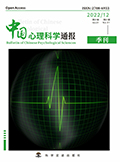

蒙医心身互动疗法是中国纳贡毕力格博士于20世纪90年代初基于传统蒙医学心身互动经典理论创立的、吸纳运用现代心理学、叙事医学、人文医学和能量医学等多学科“身、心、灵”疗愈技术的、具有东方传统医学养生保健特色的中国式心身医学心理治疗法。该疗法特别在银屑病、抑郁/焦虑障碍、失眠症、多种老年性慢性疾病及癌症化疗后负性情绪的改善等病症的疗愈方面受众口碑普遍良好。并且, 相关研究项目获得2022年度内蒙古自治区科学技术进步奖二等奖。目前, 该疗法已在内蒙古全境得到推广应用, 并正在向国内其他省、市、自治区以及海外推广。据统计, 其线上线下听课疗养人数已突破1800万人次/每年。本文运用观察法和文献法, 在概要论述东方 传统医学 (中医学、阿育吠陀医学、藏医学、蒙医学) 所蕴含的能量医学概念前提下, 试图用蒙医学赫依希拉巴达干三大生命能量理论阐释蒙医心身互动疗法临床应用基本原理, 且研究察发现了该疗法治疗后出现的调理反应生理病理表象与三大生命能量概念特征之间存在着的关联性/对应性。由此, 提出了蒙医学赫依希拉巴达干三大生命能量理论是阐释蒙医心身互动疗法基本原理的经典理论之一的假设。
Psychosomatic interaction therapy in Mongolian medicine, developed by Dr. Nagunbilig in China in the early 1990s, is a form. of Chinese-style. psychosomatic psychotherapy. Rooted in the classical theory of mind-body interaction in traditional Mongolian medicine, it integrates modern psychology, narrative medicine, humanistic medicine and energy medicine. The therapy is characterized by a holistic approach that emphasizes the harmony of body, mind, and spirit, reflecting the health preservation principles of oriental traditional medicine. This therapy has received widespread acclaim, particularly in the treatment of psoriasis, depression and anxiety disorders, insomnia, various chronic diseases in the elderly, and the alleviation of negative emotions following cancer chemotherapy, and the corresponding research project was awarded the Second Prize of the Science and Technology Progress Award of the Inner Mongolia Autonomous Region in 2022. The therapy is currently being implemented throughout Inner Mongolia, and is gradually being promoted to other provinces, municipalities and autonomous region in China, as well as overseas. According to statistics, the combined number of online and offline participants has exceeded 18 million per year. Based on an overview of the concept of energy medicine as found in oriental traditional medicine, including Traditional Chinese Medicine, Ayurvedic medicine, Tibetan medicine and Mongolian medicine, this study uses observational and literature-based methods to interpret the clinical application of this therapy through the theory of the three vital bio-energies, Khii, Shar and Badgan in Mongolian medicine, also known as the three constitutional elements or three roots. The study further identifies correlations between the physiological and pathological responses observed after therapy and the conceptual features of the three vital bioenergies. The study proposes that the theory of Khii, Shar and Badgan constitutes a classical framework for interpreting the underlying mechanisms of the psychosomatic interaction therapy in Mongolian medicine.